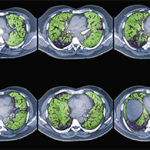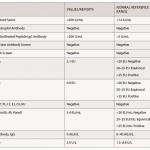NEW YORK (Reuters Health)—Transbronchial lung cryobiopsy (TBLC) and surgical lung biopsy (SLB) had a high level of agreement for diagnosing interstitial lung disease in the first comparative study.
“These data suggest that TBLC, when done by an experienced proceduralist, is a valid first-line minimally invasive diagnostic tool for patients with interstitial lung disease deemed to require lung biopsy,” the study team writes in The Lancet, online Sept. 29.1
The investigator-initiated COLDICE study was designed to establish the diagnostic accuracy of TBLC compared with SLB, “in the context of increasing use of TBLC in clinical practice as a less invasive biopsy technique,” they explain.
Participants included 65 patients (31 men; mean age: 66 years) with fibrotic interstitial lung disease. All of them underwent a pre-biopsy multidisciplinary discussion to confirm the need for a biopsy and sequential TBLC and SLB under one anesthetic.
Each biopsy type was reviewed independently by pathologists masked to other data and then in separate multidisciplinary discussions.
Histopathological agreement between TBLC and SLB was 70.8% and diagnostic agreement at multidisciplinary discussion was 76.9%, report Lauren Troy, PhD, FRACP, MBBS, BMedSci, of the University of Sydney, Australia, and colleagues.
For the 60% of TBLC with high or definite diagnostic confidence after multidisciplinary discussion, 95% were in agreement with SLB diagnoses. In the 40% of low-confidence or unclassifiable TBLC diagnoses, SLB reclassified 23% to alternative high-confidence or definite diagnoses after consensus discussion.
There were 25 adverse and serious adverse events over the course of the study. However, due to the study design, a safety comparison for each procedure was not possible, the investigators note.
However, there were some adverse events that could be attributed to TBLC, with 14 (22%) cases of mild to moderate airway bleeding, and one pneumothorax.
An accurate assessment of pneumothorax prevalence was not possible given that TBLC and SLB were done sequentially. No episodes of severe airway bleeding occurred. None of the adverse events were associated with any long-term consequences.
Mortality at three months was 2% due to acute exacerbation of idiopathic pulmonary fibrosis.
“Studies focusing on safety and standardization of the TBLC procedure will be important adjuncts to clinical practice,” Dr. Troy and colleagues say.
Christopher Ryerson, MD, MAS, of the Centre for Heart Lung Innovation at St. Paul’s Hospital, Vancouver, and Kerri Johannson, BSc, MD, MPH, FRCPC, of the University of Calgary, Canada, comment on the COLDICE study in a linked editorial.2
“All data considered, there appears to be a role for TBLC, but interstitial lung disease programs considering implementation should select patients thoughtfully and adhere to standardized procedural approaches,” they write.


